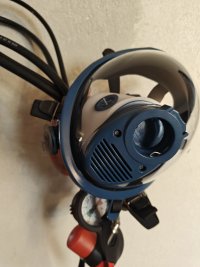J
Jdieiejdjaow
Specialist
- Nov 10, 2021
- 303
Argon flow meter arrived. It comes with a hose barb already. The diameter I measured it (inner portion of the outlet) to be 0.50cm. Which is not 3/8". Did I measure correctly? I measured the bottom of the barb where the exhaust is (outlet). What is a fraction for inches that results in 0.50cm? I'm afraid I'll have to find a double sided barb with different sizes for each side as I'm pretty sure the eebd hose will be something different (. maybe 3/8"?). 
LE: 3/16" seems to match. It converts to 0.47625cm. according to a table this means the outer diameter is 5/16" which translates as slightly less than 3/8" when converted to cm. definitely the eebd hose inner diameter will be bigger than this

 - should I be worried that I might get a leak if I use a 3/8" inner diameter hose with hose clamps on the flow meter hose barb? Assuming the eebd hose is 3/8"
- should I be worried that I might get a leak if I use a 3/8" inner diameter hose with hose clamps on the flow meter hose barb? Assuming the eebd hose is 3/8" 
LLE: with a hose of 5/16" to match flow meter barb, and, with a 8mm double sided barb, the eebd hose (assuming 3/8" inner diameter) will be ~1.5mm larger than the double sided hose barb side facing the eebd. If I use a hose clamp, should I be worried about leaks?
LE: 3/16" seems to match. It converts to 0.47625cm. according to a table this means the outer diameter is 5/16" which translates as slightly less than 3/8" when converted to cm. definitely the eebd hose inner diameter will be bigger than this
LLE: with a hose of 5/16" to match flow meter barb, and, with a 8mm double sided barb, the eebd hose (assuming 3/8" inner diameter) will be ~1.5mm larger than the double sided hose barb side facing the eebd. If I use a hose clamp, should I be worried about leaks?
Attachments
Last edited:








